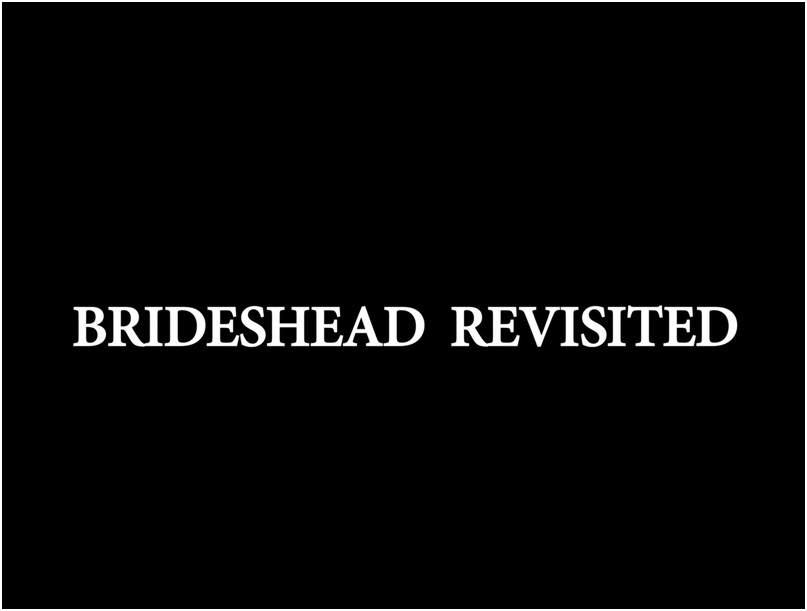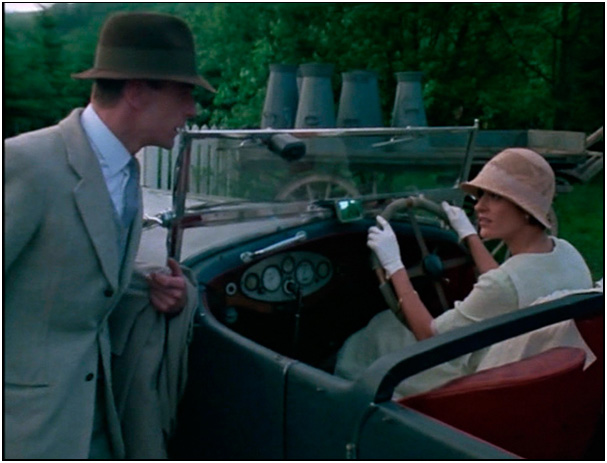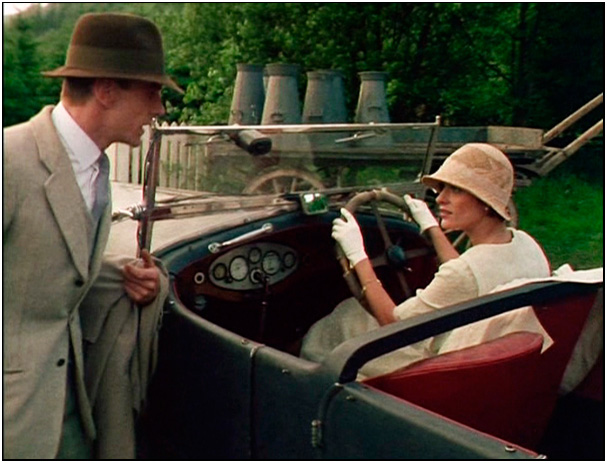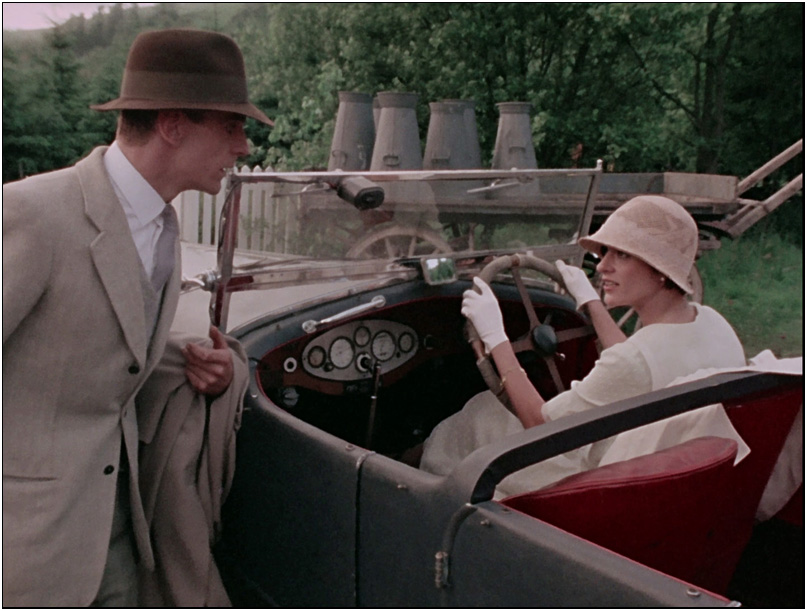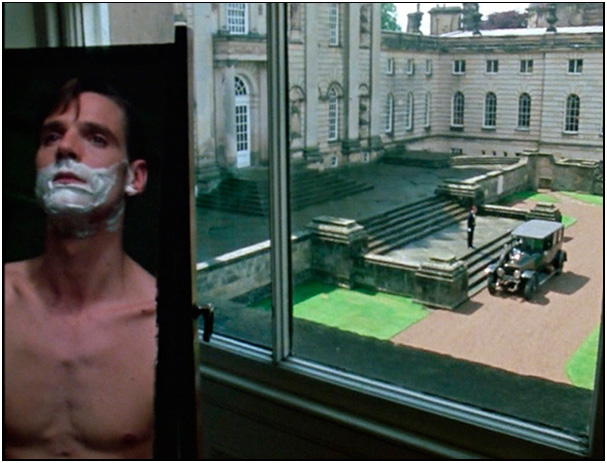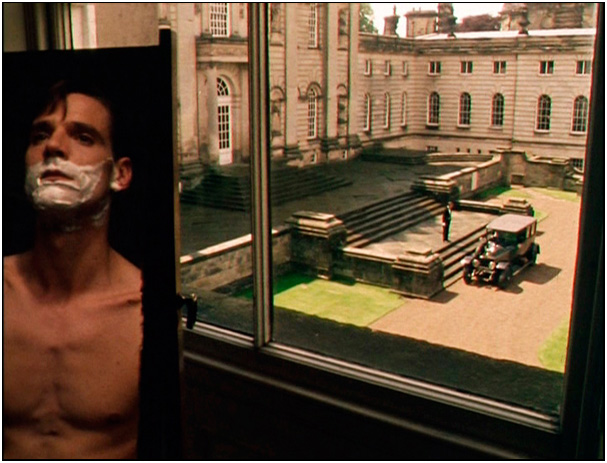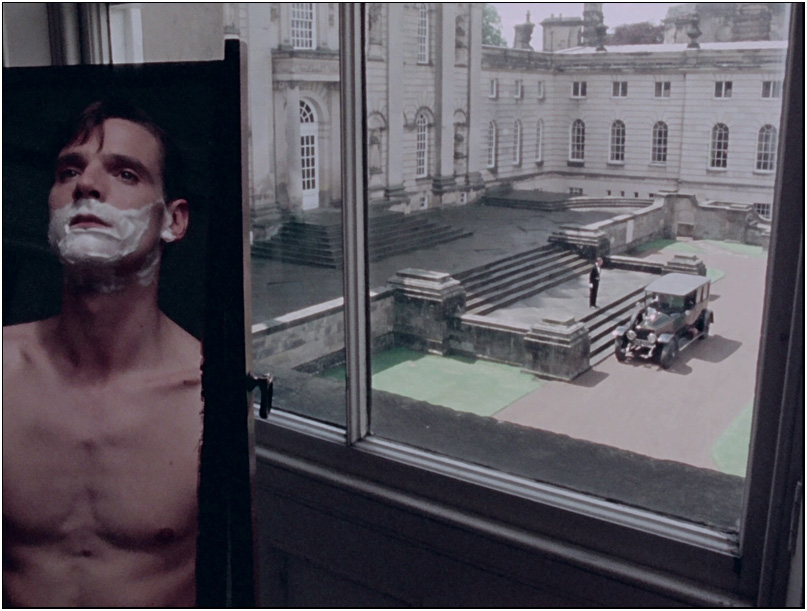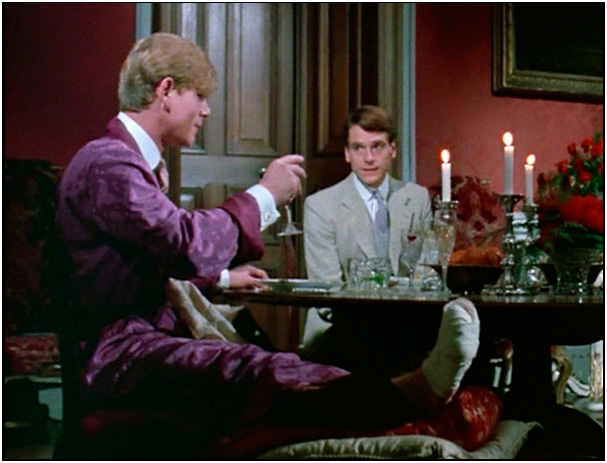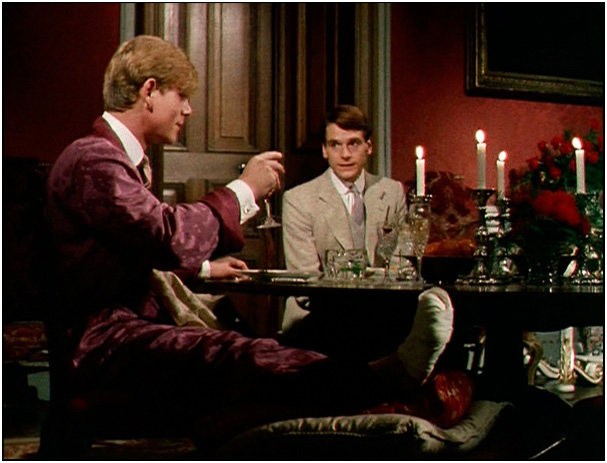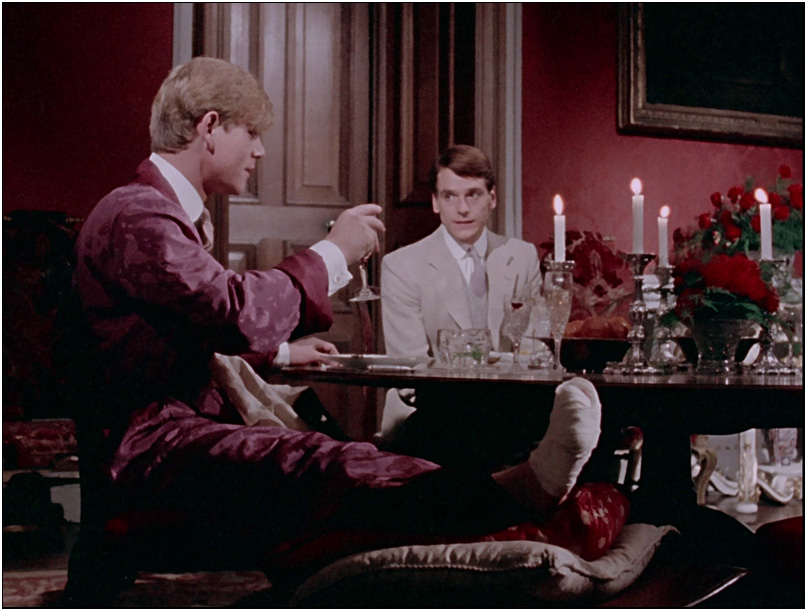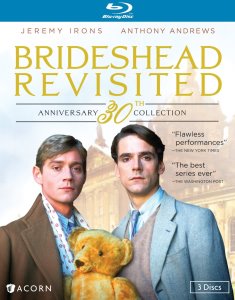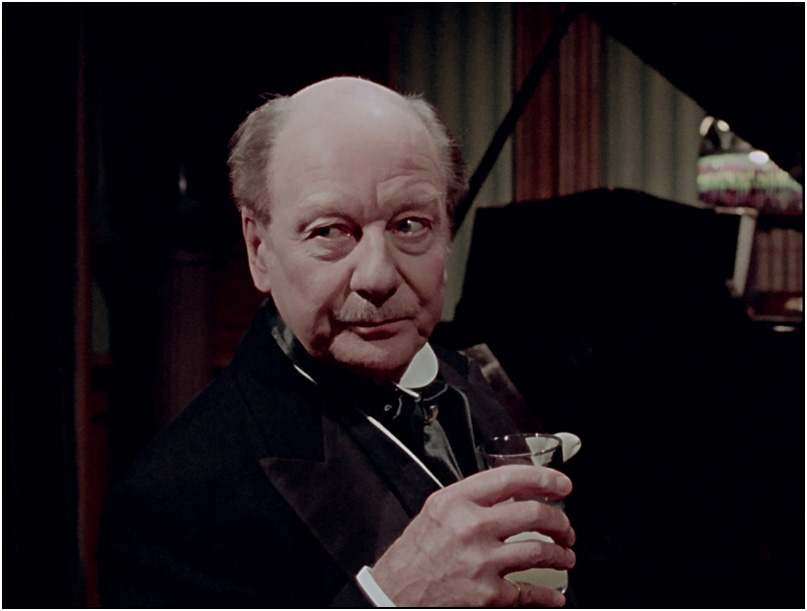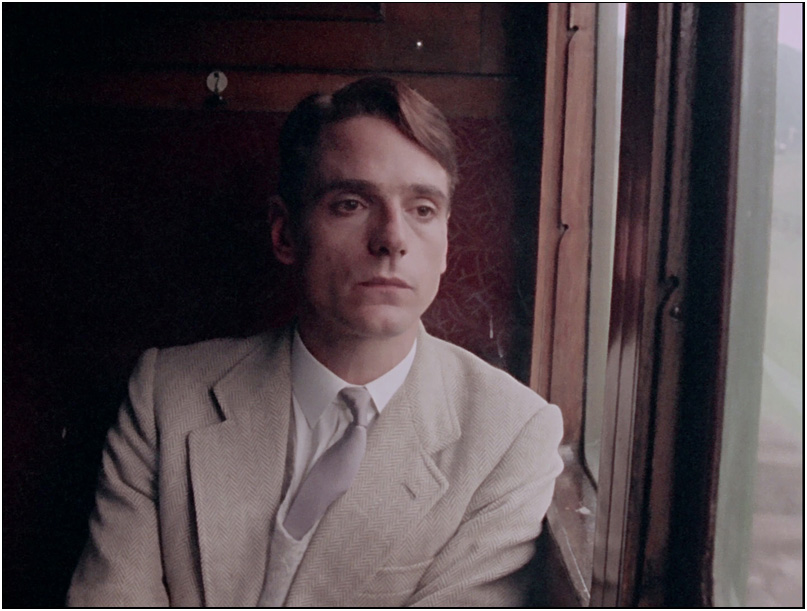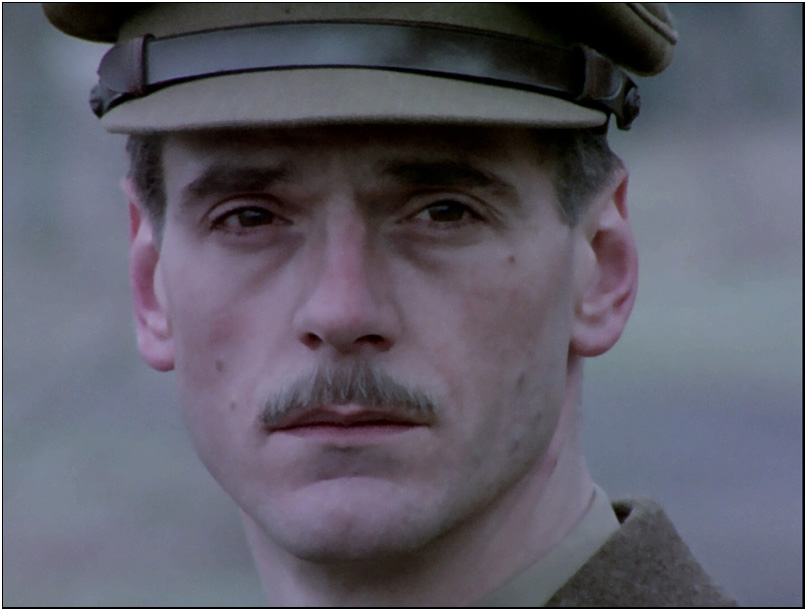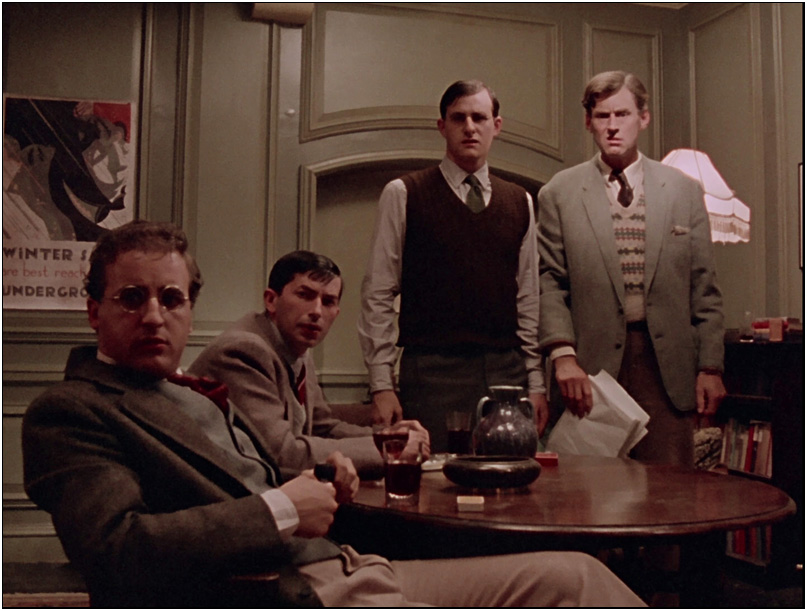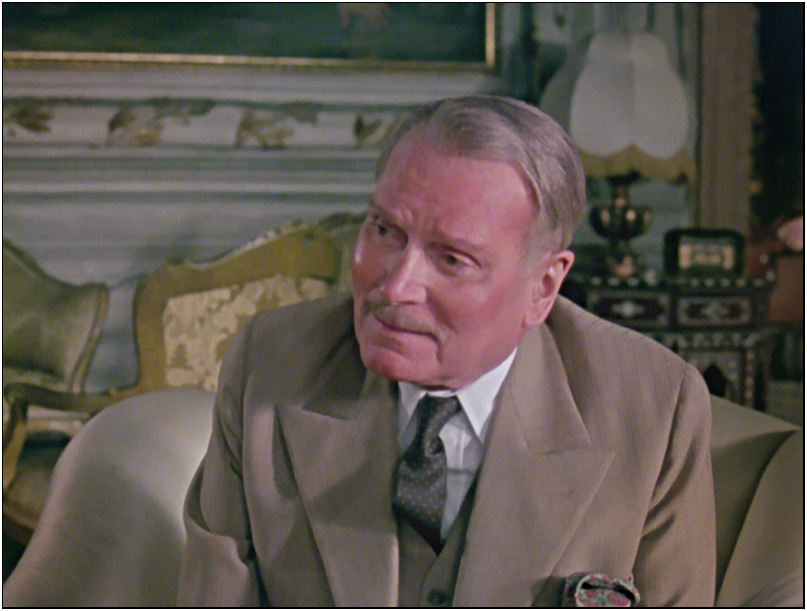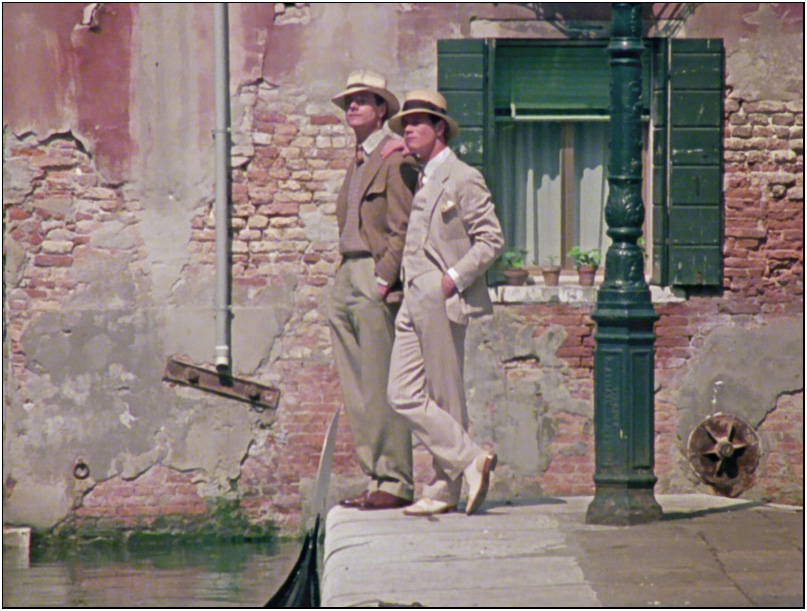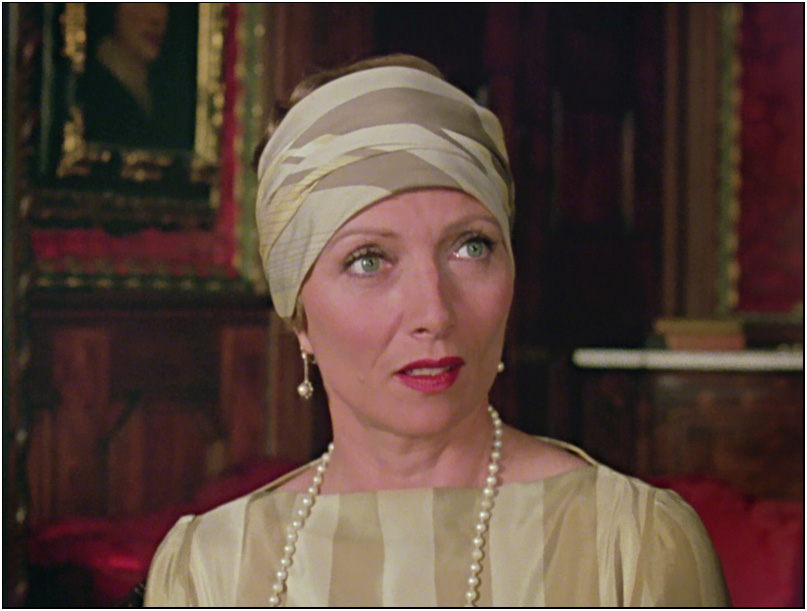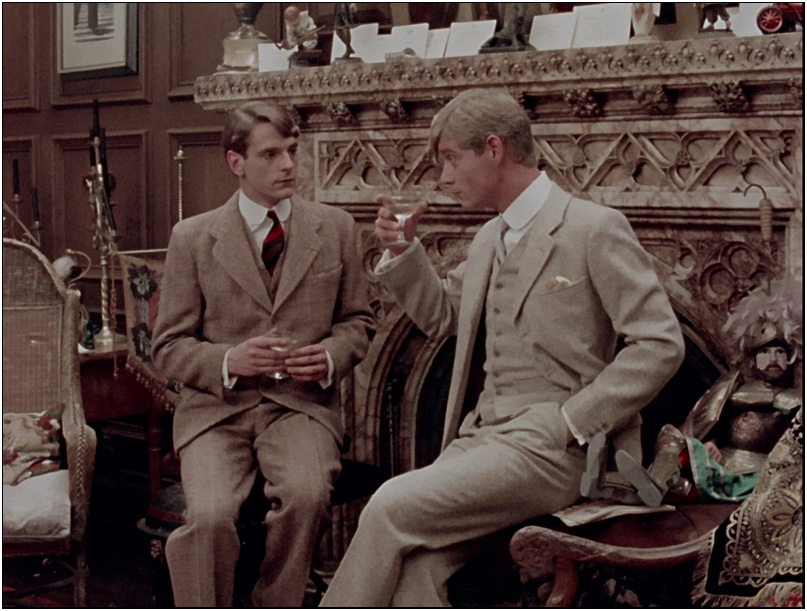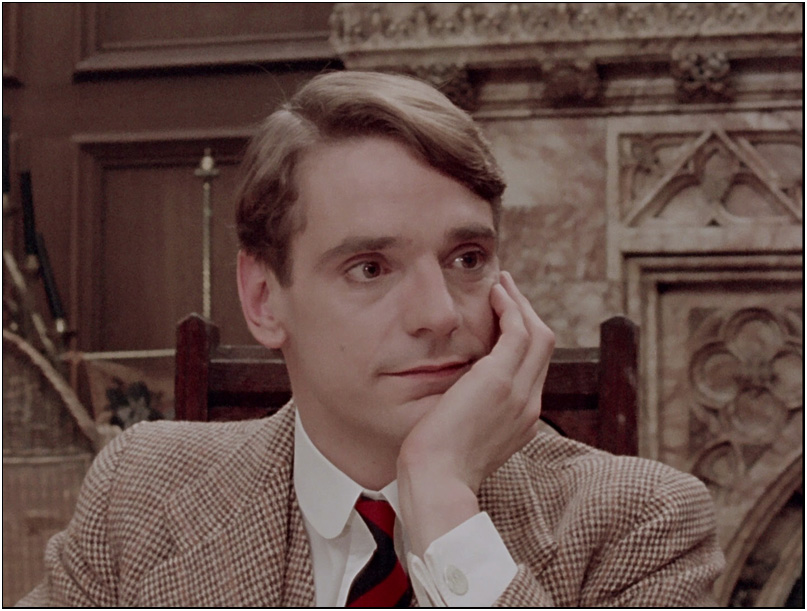NOTE: The below Blu-ray captures were
taken directly from the Blu-ray disc.
Image: 3/5
Brideshead Revisited is photographed on location in England (Oxford,
Castle Howard), Italy (Venice, mostly) and Malta – there are even a few
scenes on the RMS Queen Elizabeth 2 at sea. These images not only serve
as a kind of counterpoint to the malaise that permeates the story, they
make our staying with the series for eleven hours endurable. If the
picture quality suffers in this respect so does our involvement. Unlike
watching a second or third rate print of Meet John Doe, where allowances
can be made, we cannot readily survive a less than textured, colorful
and properly resolved Brideshead Revisited.
While no one would have anticipated the high resolution beauty of a
Downton Abbey, we might have held out hopes that Acorn’s
Blu-ray
of Brideshead Revisited would restore the picture to some sort of Pride and
Prejudice glory, but in this they will be sorely disappointed. For one
thing, Pride and Prejudice was shot in the larger Super 16 mm format,
which offers an image of greater width (which is why it comes out at
1.78:1 on the
Blu-ray) and for another, Brideshead Revisited is simply
not restored – nor is it marketed as such. So it’s something of a
mystery how Acorn got stuck with such a shabby source from which to
produce a high definition presentation.
One thing we can say about Acorn’s
Blu-ray
up until now: transfer artifacts and edge enhancement is minimal to non-existent, color and
contrast look good, noise is low and DNR does not appear to be in
evidence. One has the feeling that all they do is convert their source
to
Blu-ray
without any consideration whatever. I suspect that’s what
happened here: that they were given a sub-standard source to work with
and presented it without blushing. I don’t know if it was possible in
the circumstances but it might have been better for them to have refused
it.
The picture is 1080p, despite the “1080i” indication on the back cover,
and the image is solid with good movement across the frame. All the
Brideshead Revisited DVDs I have seen have problems in both of these
respects, the worst of which is that all too often it appears that
everything on the verge of falling apart, that the pixels cannot find
their way to coherency. This impression is wonderfully absent on the
Blu-ray. This and an overall improvement in sharpness is its saving
grace. . . or would be if it weren’t for the contrast and color, which
is rarely correct.
Interestingly, both contrast and color are remarkably different on the
Region 1 and 2 DVDs, with magentas that embarrass themselves on the UK
edition, and black levels and color so intense on the US that it ruins
the sense of nostalgia the production design and music take such pains
to manifest. The
Blu-ray
is another matter entirely. Much of the time
the image is so faded and thin as to fear for its health. One more step
and it would be devoid of color altogether. What color there is often
gray/green or magenta. On the other hand, along with bit rates hovering
in the low 20s, there are scenes where the
Blu-ray
gets both color and
contrast just right - the darker interiors, mostly, though some at Malta
are excellent. A great deal of the second episode is very satisfactory,
yet the third alternates long passages of crushed contrast with unruly
grain.
Whatever else may be said about the Acorn DVD and
Blu-ray
image
renderings it is absolutely true that they are entirely different
viewing experiences. The one I find exhausting, the other exasperating.
And the UK DVD isn’t right either. It all seems puzzlingly arbitrary.
What is all the stranger is that Acorn had made so much fuss over their
previous DVD, saying that it was restored from the original televised
print (not the camera negative!). Evidently, the
Blu-ray
begins life
elsewhere or did not go through a restoration process.
Audio & Music: 5/9
For some reason the source materials offered to Acorn by ITV did not
include a high-definition audio track. Not even LPCM! Nothing but tired
Dolby Digital, as if dialogue, no matter how elegant, doesn’t require
the best the medium can offer. Rant aside, the new
Blu-ray
audio
represents a significant upgrade in respect to clarity, scale and
texture compared to all previous DVDs, which further demonstrates that
the source for this transfer is different.
That said there is something that struck me as odd about the audio for
the first couple of reels: I had the distinct impression it was running
slow! Mr. Iron’s baritone sounded altogether too deep and tired. Even
the music seemed to drag. I recognize that Charles is at this point in
the story exhausted of life, but still this seemed wrong to me. I
skipped forward to his days at Oxford and suddenly the voice and music
brightened up. So I measured it. And lo, what takes 110 seconds for the
credits and opening monologue on the DVD stretches to 122 on the
Blu-ray. That’s a 10% stretch, yet the entire episode is about four and
a half minutes longer on
Blu-ray
than on the Region 1 DVD, which,
funnily enough, is 4% longer than the Acorn DVD. The Acorn DVD is the
same length as the UK, which suggests it reflects the usual 4% PAL
speedup, yet I have always accepted the voices as being correct – which
tells me that my ear is not as sharp as I always assumed. Further
personal insults are endured with other episode timings: e.g. episodes
9, 10 and 11 are 53:16/55:50, 51:44/54:12, 100:13/104:22 respectively.
So, except for the odd stretch at the beginning, the
Blu-ray
seems to
have the speed correct.
Extras: 7
First up is “Revisiting Brideshead” - a 2006 documentary featuring
retrospective interviews with Jeremy Irons, Anthony Andrews, Diana
Quick, director Charles Sturridge, and some disregardable thoughts by
various TV historians and critics.
Also included are illuminating and at times very entertaining
commentaries to accompany four of the episodes, each with a different
panel that include actors Jeremy Irons, Diana Quick, Nickolas Grace and
Anthony Andrews, producer/writer Derek Granger and director Charles
Sturridge.
“Brideshead Remembered” is a lengthy audio commentary, new to this
release I believe, by the show’s first director Michael Lindsay Hogg
played over a photo gallery. Ten minutes worth of funny (rather than
completely silly) outtakes round out the bonus features.
Recommendation: 5
The thin colorless image notwithstanding, the
Blu-ray
is an improvement
of sorts: the audio is definitely clearer and fuller and the picture
quality is more coherent and sharper. I should think that someday the
Brits will introduce a properly restored high-definition edition of
their, but until then, if you can tolerate the variable picture quality,
this
Blu-ray
is the best rendering of Brideshead Revisited available.
Leonard Norwitz
LensViews
March 6, 2012
![]()
![]()

![]()
![]()
